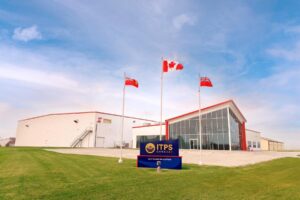This course is an introduction to rotary-wing flight test methods designed specifically for aviation professionals with no prior flight test experience. The course includes both airborne and simulator-based flight test exercises on single and multi-engine rotary wing aircraft, with students gaining practical experience as flight test crew members. Instruction focuses on flight test methods, test planning, data acquisition and analysis. Participants are also introduced to civil specifications for rotary-wing aircraft (CS27/29), relevant military specifications, specifically ADS-33E-PRF, and methods of demonstrating compliance when testing a new or modified aircraft. A dedicated end-of-course flight test exercise is performed, providing an opportunity for the student to consolidate and demonstrate the flight test principles and techniques learnt during the course. Each student will deliver a short oral presentation highlighting the key flight test results, analysis, conclusions and recommendations based on their practical flight test exercise. All flight test exercises are combined with detailed pre-flight briefings and post-flight debriefings led by our highly experienced instructors, emphasizing the test techniques, data collection and top-level data analysis. The delivery pace of the course ensures that all students will receive maximum benefit and have an enjoyable learning experience, regardless of their flight experience or technical level.
Admission: This course is designed for aviation professionals with no prior flight test experience
Topics:
- Introduction to Flight Test
- Safety and Risk in Flight Test
- Civil and Military Specifications
- Test Planning
- Report Writing
- Air Data and Pressure Error Corrections
- Engine and Rotor Governing Assessment
- Hover Performance
- Vertical Flight Performance
- Level Flight Performance
- Climb and Descent Performance
- Stability
- Flight Control Mechanical Characteristics
- Longitudinal Static and Dynamic Stability
- Lateral Directional Static and Dynamic Stability
- Handling Qualities & ADS33
On-Site Course Link:
Buy Now
Note: If you are based in Canada, please contact: info@ITPSCanada.com for pricing including HST
Duration: 2 weeks
For more information on simulation, flight or lecture hours, contact info@ITPSCanada.com.
The new facility features a 27,000 sq.ft. hangar, big enough to house ITPS’s expanding fleet of aircraft. The administration and classroom building have been extended by 15,000 square feet and feature six additional classrooms, a simulator centre, a state of the art Telemetry Room, additional student facilities and change rooms. The new building features additional briefing rooms, a flight crew ready room and much enlarged canteen area.

CYXU is a modern regional airport 5 nm north east of the city of London, Ontario. The airport is an international gateway airport with direct flights from Chicago and Detroit and Immigration and Customs facilities. It is as of 2009 the 20th busiest airport in Canada, which makes for efficient school operations with little to no delays due to traffic. The airport is south of Toronto and outside the Toronto (CYYZ) FIR and has close access to large sections of Class E and G airspace minimizing transit times for the execution of flight exercises which can be flown up to FL180 on a VFR flight plan but are Controlled VFR (CVFR) with flight control by Toronto Center above 12000 feet. Two dedicated test areas Delta and Juliet a low altitude one to 12000 and a high altitude one over Lake Huron, up to FL350, north west of London may be used by the school under an agreement with NAV Canada, the Canadian Air Traffic Control Authority. The school therefore enjoys a very favourable air traffic environment for its training operations.





